Nepal Attractions: 15 Must-Visit Tourist Attractions That Capture the Spirit of the Himalayas

Are you ready to explore Nepal’s stunning mountains and rich culture? Nepal, nestled in the Himalayas, invites you to discover its top attractions that truly embody the spirit of the mountains.
From the famous Everest and Annapurna regions to peaceful Lumbini, where Buddha was born, and vibrant Kathmandu, each place has its own charm.
Let’s travel together through Nepal Tourism breathtaking landscapes and diverse heritage, where every stop promises a new adventure and a deeper connection with this beautiful country.
1. Kathmandu

About the Place: Kathmandu, the capital city of Nepal, is a bustling metropolis nestled in the Kathmandu Valley. It’s renowned for its rich cultural heritage and vibrant atmosphere. The city is a blend of ancient traditions and modern life, where centuries-old temples stand amidst bustling markets and lively street scenes. Kathmandu offers visitors a unique experience, with its historical landmarks, vibrant arts and crafts, and warm hospitality that reflects the spirit of Nepal.
Place Address: Kathmandu, Nepal
How to Get There:
- By Air: Tribhuvan International Airport is the main gateway to Kathmandu. It’s located about 6 kilometers from the city center. International flights from major cities worldwide and domestic flights from within Nepal serve this airport.
- By Bus: Kathmandu is well-connected by bus routes from major cities in Nepal and neighboring countries like India. Buses arrive at different terminals in Kathmandu, such as Gongabu Bus Park and New Bus Park.
- By Car/Taxi: Taxi and private cars are available at the airport and can also be hired from neighboring towns. Roads from other parts of Nepal lead into Kathmandu, providing scenic routes through the Kathmandu Valley.
Why to Visit: Kathmandu offers a rich tapestry of cultural experiences and historical landmarks that attract travelers from around the globe. Visitors can explore ancient temples like those in Durbar Square, which showcase exquisite architecture and intricate carvings. The city’s vibrant markets, such as Thamel, offer a plethora of handicrafts, souvenirs, and local cuisine to explore. Kathmandu is not just a city; it’s an immersion into Nepal’s diverse heritage and urban charm.
Daily Average Budget: Travelers can expect to spend approximately $20-30 USD per day on average, depending on their choice of accommodation, dining preferences, and activities.
Activities and Attractions:
- Durbar Square: Visit historic temples and royal palaces.
- Swayambhunath Stupa (Monkey Temple): Explore this iconic Buddhist stupa with panoramic views of Kathmandu.
- Thamel: Wander through bustling streets filled with shops, restaurants, and nightlife.
- Pashupatinath Temple: Experience the spiritual ambiance of Nepal’s most sacred Hindu temple.
- Local Cuisine: Try traditional Nepali dishes like momos (dumplings) and dal bhat (lentils and rice).
Things to Avoid:
- Drinking Tap Water: Stick to bottled water to avoid health risks.
- Pickpockets: Be cautious in crowded areas and keep valuables secure.
- Respect Local Customs: Dress modestly when visiting religious sites and respect local traditions.
- Solo Trekking: Avoid trekking alone in unfamiliar areas, especially in remote regions around Kathmandu.
2. Boudhanath Stupa (Bodhnath)

About the Place: Boudhanath Stupa, also known as Bodhnath, is one of the largest and most significant stupas in Nepal and a UNESCO World Heritage Site. It is located in the eastern outskirts of Kathmandu and holds immense religious and cultural importance for Buddhists. The stupa’s massive mandala makes it a focal point of Tibetan Buddhism outside Tibet, attracting pilgrims and tourists alike to its serene and spiritual ambiance.
Place Address: Boudhanath Stupa, Boudha, Kathmandu, Nepal
How to Get There:
- By Taxi/Car: From Kathmandu city center, take a taxi or hire a car to Boudhanath. The journey takes about 20-30 minutes, depending on traffic.
- By Bus: Public buses run from various points in Kathmandu to Boudha. Look for buses heading towards Boudha or directly ask at bus stations for the right route.
- By Walking: If you’re staying nearby, Boudhanath is accessible on foot from surrounding neighborhoods in Boudha.
Why to Visit: Boudhanath Stupa is a must-visit for its cultural and spiritual significance. It offers a tranquil escape from the bustling city life of Kathmandu. The stupa’s imposing structure, adorned with colorful prayer flags and prayer wheels, creates a serene atmosphere conducive to meditation and contemplation. Visitors can witness Buddhist rituals and practices, experience the unique architecture of the stupa, and explore nearby monasteries and handicraft shops. Boudhanath provides a glimpse into Tibetan Buddhist culture and offers a peaceful retreat for spiritual seekers and curious travelers alike.
Daily Average Budget: Visitors can expect to spend around $5-10 USD per day on average, mainly for meals and souvenirs.
Activities and Attractions:
- Circumambulation (Kora): Walk around the stupa in a clockwise direction as pilgrims do, spinning prayer wheels and chanting mantras.
- Visit Monasteries: Explore nearby monasteries like Shechen Monastery and Kopan Monastery to experience Buddhist teachings and practices.
- Shop for Souvenirs: Browse handicraft shops around the stupa for Tibetan artifacts, prayer flags, and religious items.
- Enjoy Local Cuisine: Try Tibetan and Nepali dishes at restaurants and cafes surrounding Boudhanath.
Things to Avoid:
- Disrespectful Behavior: Maintain a respectful demeanor and adhere to local customs, especially around religious sites.
- Noise and Disturbance: Avoid loud conversations and disruptive behavior that may disturb pilgrims and meditators.
- Photography Etiquette: Ask for permission before taking photos of individuals, monks, or inside temples.
Visiting Boudhanath Stupa offers a unique opportunity to immerse oneself in Tibetan Buddhist culture and spirituality while enjoying the peaceful ambiance of this iconic site in Kathmandu.
3. Pokhara

About the Place: Pokhara, nestled in the lap of the Himalayas, is a serene city known for its stunning natural beauty and tranquil lakes. It serves as a gateway to the Annapurna Circuit, a popular trekking destination. The city offers breathtaking views of snow-capped mountains, including Machhapuchhre and Annapurna, reflected in the calm waters of Phewa Lake.
Place Address: Pokhara, Gandaki Pradesh, Nepal
How to Get There:
- By Bus: Regular buses ply from Kathmandu to Pokhara, taking about 6-7 hours depending on road conditions.
- By Air: Tribhuvan International Airport in Kathmandu offers flights to Pokhara’s Pokhara Airport, a quick and scenic option.
- By Car: Private taxis and car rentals are available from Kathmandu, offering a comfortable but longer journey through scenic landscapes.
Why to Visit: Pokhara beckons travelers with its natural wonders, offering activities like boating on Phewa Lake, paragliding from Sarangkot, and exploring the tranquil Davis Falls and Gupteshwor Cave. The city’s laid-back atmosphere and breathtaking vistas make it an ideal retreat for relaxation and adventure alike.
Daily Average Budget: Approximately $15-30 USD per day, including accommodation, meals, and local transportation.
Activities and Attractions:
- Phewa Lake: Enjoy boating and stunning views of the Annapurna range.
- Sarangkot: Paraglide for panoramic views of Pokhara Valley and the Himalayas.
- Davis Falls: Visit this unique waterfall and nearby Gupteshwor Cave.
- World Peace Pagoda: Hike or take a boat ride to this Buddhist stupa for serene views.
Things to Avoid:
- Overpacking: Pack light for treks and tours to enjoy activities comfortably.
- Trekking without Guide: Choose authorized guides for safety and local insights.
- Ignoring Altitude: Acclimatize before higher altitude activities like trekking.
4. Bhaktapur

About the Place: Bhaktapur, an ancient city in the Kathmandu Valley, is renowned for its well-preserved medieval architecture and rich cultural heritage. It is a UNESCO World Heritage Site and offers a glimpse into Newar traditions and craftsmanship, featuring intricately carved temples, courtyards, and palaces.
Place Address: Bhaktapur, Bagmati Pradesh, Nepal
How to Get There:
- By Bus: Buses from Kathmandu’s Ratna Park to Bhaktapur’s bus stand, a 40-minute journey.
- By Taxi: Taxis offer direct access from Kathmandu in less than 30 minutes, suitable for a quick and comfortable ride.
Why to Visit: Bhaktapur enchants visitors with its cultural vibrancy, showcasing the Nyatapola Temple, Dattatreya Square, and Pottery Square. The city’s traditional Newari cuisine and pottery artistry make it a cultural treasure trove worth exploring.
Daily Average Budget: Around $10-20 USD per day, covering food, entrance fees, and local transport.
Activities and Attractions:
- Durbar Square: Explore ancient palaces, temples, and royal courtyards.
- Pottery Square: Witness pottery-making traditions and purchase handmade souvenirs.
- Nyatapola Temple: Admire this five-story pagoda with intricate carvings and statues.
- Local Cuisine: Sample Newari delicacies like Juju Dhau (king curd) and Bara (lentil pancake).
Things to Avoid:
- Disrespectful Behavior: Respect local customs and religious sites.
- Unauthorized Guided Tours: Opt for licensed guides for accurate historical insights.
- Littering: Keep Bhaktapur clean by disposing of waste responsibly.
Visiting Bhaktapur promises a journey through time and tradition, offering a glimpse into Nepal’s rich cultural tapestry and architectural marvels.
5. Chitwan National Park
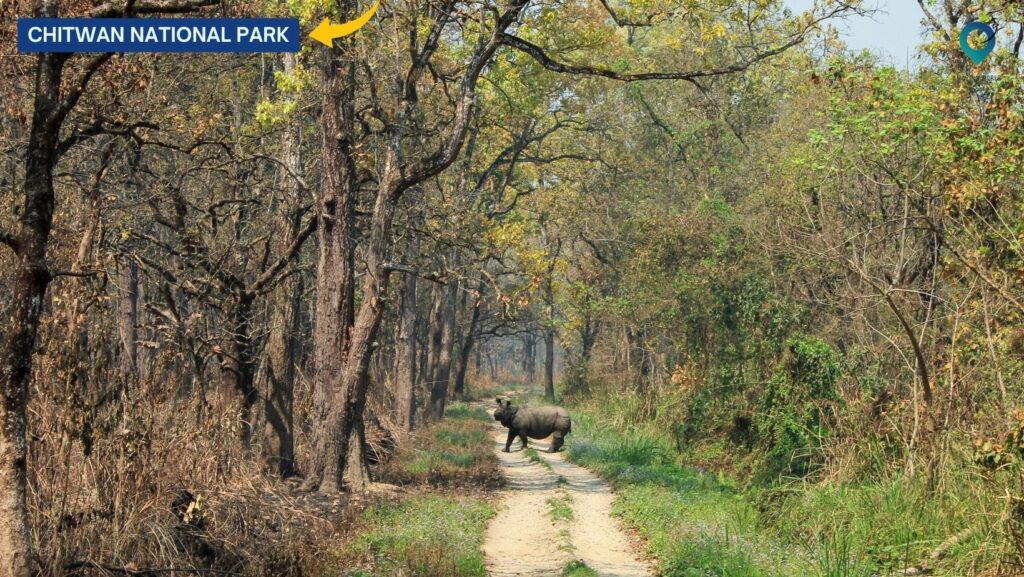
About the Place: Chitwan National Park, located in southern Nepal, is a UNESCO World Heritage site renowned for its rich biodiversity and conservation efforts. It spans over 900 square kilometers of subtropical lowlands, providing a habitat for diverse wildlife species, including the endangered Bengal tiger, one-horned rhinoceros, and Gharial crocodiles. The park is also home to over 500 bird species, making it a paradise for birdwatchers. Its lush forests, grasslands, and the meandering Rapti River offer a unique blend of natural beauty and wildlife encounters.
Place Address: Chitwan National Park, Bharatpur Metropolitan City, Chitwan, Nepal
How to Get There:
- By Bus: From Kathmandu or Pokhara, buses are available to Sauraha, the main entry point to Chitwan. The journey takes approximately 6-7 hours from Kathmandu and slightly less from Pokhara.
- By Car: Private taxis offer a faster and more comfortable journey, taking about 5-6 hours from Kathmandu.
- By Air: Bharatpur Airport has daily flights from Kathmandu, followed by a short drive to Sauraha.
Why to Visit: Chitwan National Park offers a unique opportunity to explore the wilderness of Nepal’s lowlands. Visitors can embark on thrilling jungle safaris either on elephant-back or in jeeps, providing close encounters with wildlife like nowhere else. The park also hosts the Elephant Breeding Center, where conservation efforts for these majestic animals are showcased. Cultural experiences with the indigenous Tharu community, known for their vibrant traditions, add a cultural dimension to the visit. For nature lovers and adventure seekers alike, Chitwan promises an unforgettable experience amidst Nepal’s natural wonders.
Daily Average Budget: The daily budget ranges from $30 to $50 USD per person, covering accommodation in lodges or resorts, meals, park entry fees, and safari costs.
Activities and Attractions:
- Jungle Safaris: Explore the park on elephant-back or in jeeps to spot wildlife.
- Elephant Breeding Center: Learn about elephant conservation efforts.
- Birdwatching: Discover over 500 bird species in their natural habitat.
- Tharu Cultural Show: Experience traditional dance and music performances.
Things to Avoid:
- Disturbing Wildlife: Respect Park regulations and maintain a safe distance from animals.
- Unauthorized Activities: Only participate in activities approved by park authorities.
- Littering: Keep the park clean by disposing of waste responsibly.
6. Trekking in the Langtang Region
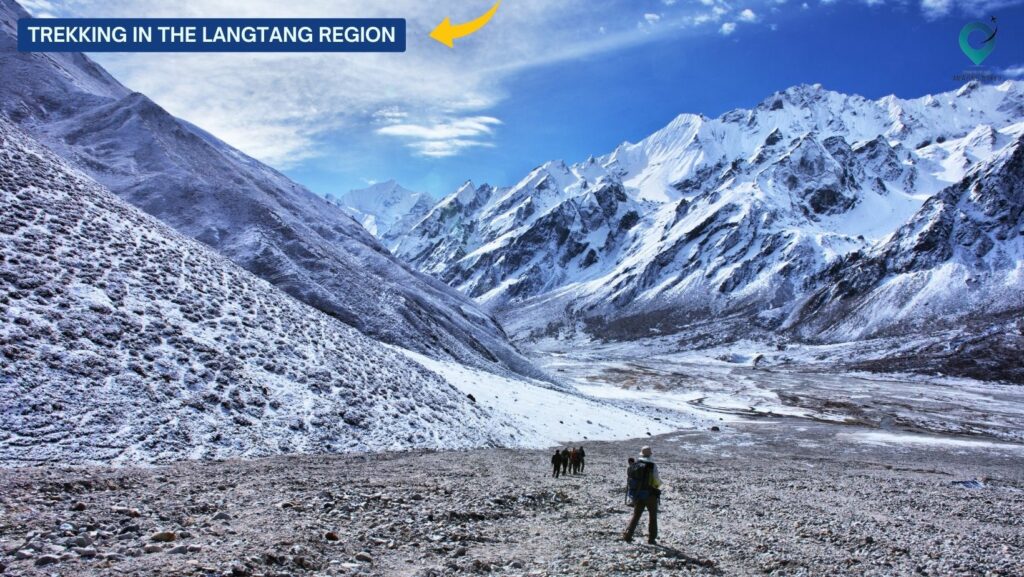
About the Place: The Langtang Region, located north of Kathmandu bordering Tibet, offers some of Nepal’s most accessible trekking routes amidst stunning Himalayan landscapes. The region is dominated by the Langtang National Park, which is home to diverse flora and fauna, including the elusive snow leopard. The area is also culturally rich, inhabited by Tamang and Sherpa communities known for their warm hospitality and unique traditions.
Place Address: Langtang Region, Rasuwa District, Bagmati Pradesh, Nepal
How to Get There:
- By Bus: Buses depart from Kathmandu to Syabrubesi, the starting point for Langtang treks. The journey takes approximately 7-8 hours.
- By Car: Private taxis provide a more comfortable option, taking around 6-7 hours from Kathmandu to Syabrubesi.
- By Trek: Longer trekking routes can start from Sundarijal near Kathmandu, traversing the Helambu trail before entering the Langtang region.
Why to Visit: Trekking in the Langtang Region offers a unique blend of natural beauty and cultural immersion. The trek to Kyanjin Gompa, a Buddhist monastery nestled amidst towering peaks, is a highlight for many trekkers. The region is less frequented than the Annapurna and Everest regions, offering a quieter trekking experience without compromising on stunning mountain vistas. The hospitality of local communities and encounters with yaks add to the charm of this Himalayan adventure.
Daily Average Budget: Trekkers can expect to spend approximately $20 to $40 USD per day, covering accommodation in teahouses, meals, and necessary trekking permits.
Activities and Attractions:
- Kyanjin Ri Hike: Climb to Kyanjin Ri for panoramic views of Langtang Lirung and surrounding peaks.
- Langtang Valley: Explore the picturesque valley dotted with Tamang villages.
- Gosainkunda Lake: Visit this sacred lake during the trekking season.
- Tamang Cultural Experience: Engage with local Tamang communities and learn about their traditional way of life.
Things to Avoid:
- Ignoring Altitude: Acclimatize properly to avoid altitude sickness.
- Unmarked Trails: Stick to designated trekking paths for safety.
- Wilderness Camping: Only camp in designated areas to protect the fragile ecosystem.
7. Trekking in the Annapurna Region
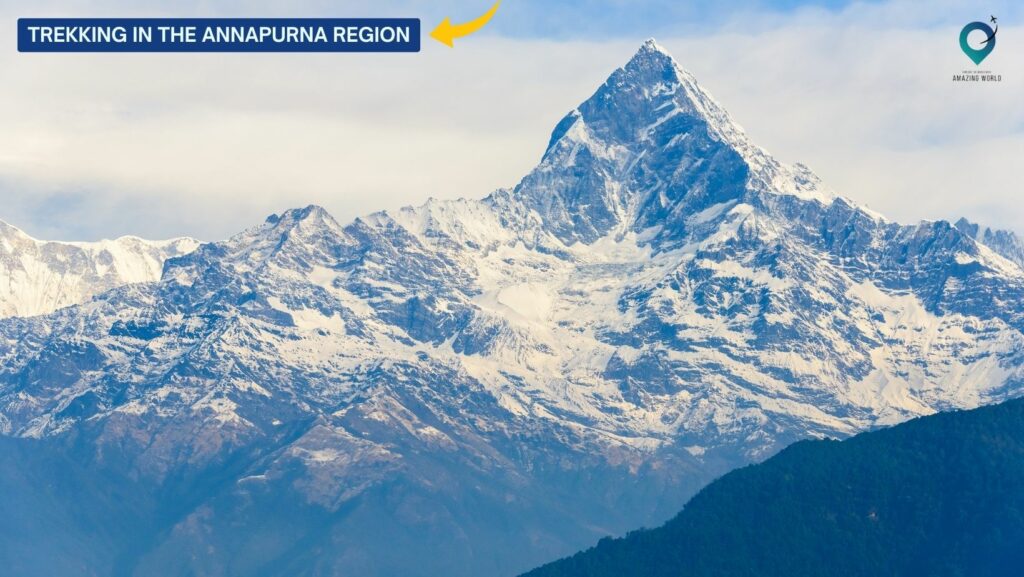
About the Place: The Annapurna Region, located in north-central Nepal, is one of the most popular trekking destinations in the world. The region is dominated by the Annapurna Mountain range, including several peaks over 7,000 meters, and offers diverse landscapes ranging from subtropical forests to high-altitude desert. Trekking routes cater to all levels of trekkers, from beginners to experienced mountaineers, with iconic trails like the Annapurna Circuit and Annapurna Base Camp trek.
Place Address: Annapurna Region, Gandaki Pradesh, Nepal
How to Get There:
- By Bus: Buses depart from Pokhara to trailheads such as Nayapul or Besisahar, taking approximately 2-3 hours depending on the route.
- By Car: Private taxis provide a faster and more comfortable journey from Pokhara to trailheads.
Why to Visit: Trekking in the Annapurna Region promises spectacular mountain scenery, diverse flora and fauna, and cultural insights into Gurung and Magar communities. Highlights include sunrise views from Poon Hill, offering panoramic vistas of Dhaulagiri and the Annapurna range, and the serene beauty of Annapurna Base Camp surrounded by towering peaks. The region’s teahouse trekking style allows trekkers to immerse themselves in local culture while enjoying Nepal’s highest peaks.
Daily Average Budget: Trekkers should budget approximately $25 to $50 USD per day, covering accommodation in teahouses, meals, necessary trekking permits, and occasional hot showers.
Activities and Attractions:
- Annapurna Base Camp: Trek to the base of the world’s 10th highest mountain.
- Poon Hill Sunrise: Hike for stunning sunrise views over the Himalayas.
- Gurung Museum: Visit Ghandruk village to learn about Gurung culture.
- Natural Hot Springs: Relax in Jhinu Danda’s hot springs after trekking.
Things to Avoid:
- Overpacking: Pack light for a comfortable trekking experience.
- Rushing Acclimatization: Take time to acclimatize to altitude changes.
- Solo Trekking: For safety, trek with a guide or group, especially in remote areas.
8. Swayambhunath (Monkey Temple)
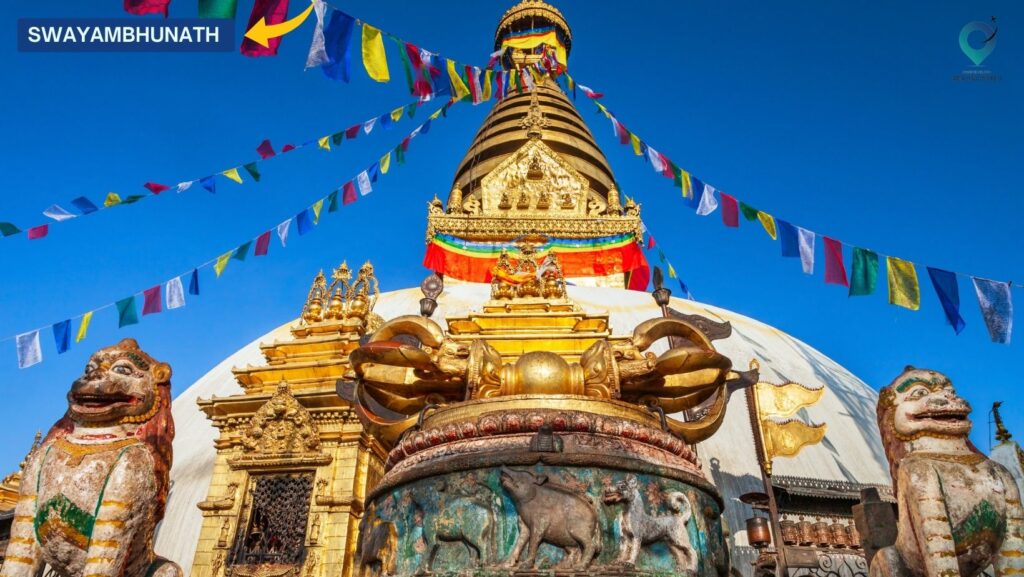
About the Place: Swayambhunath, commonly known as the Monkey Temple, is one of Kathmandu’s most iconic landmarks. Perched atop a hill west of Kathmandu Valley, this ancient Buddhist stupa is adorned with colorful prayer flags and inhabited by playful monkeys, hence its nickname. It offers stunning panoramic views of Kathmandu city and the surrounding valley, making it a spiritual and scenic retreat for locals and visitors alike.
Place Address: Swayambhunath Stupa, Kathmandu, Nepal
How to Get There:
- By Taxi: Taxis are readily available from anywhere in Kathmandu. The ride to Swayambhunath takes about 20-30 minutes, depending on traffic.
- By Bus: Public buses to Swayambhunath are available from various points in Kathmandu. The ride may take longer due to multiple stops.
- By Foot: For the adventurous, a hike up the hill to Swayambhunath offers a scenic route and a chance to explore the local neighborhoods.
Why to Visit: Swayambhunath is not only a religious site but also a cultural hub steeped in history. Dating back more than 2,000 years, it holds immense significance for Buddhists and showcases intricate architecture and religious artifacts. Visitors can experience Buddhist rituals, spin prayer wheels for blessings, and enjoy the serene atmosphere amidst fluttering prayer flags. The hilltop location provides a peaceful escape from the hustle and bustle of Kathmandu, offering panoramic views and photo opportunities at every turn.
Daily Average Budget: Visitors can explore Swayambhunath on a budget of around $5 to $10 USD, covering entrance fees (if applicable), snacks, and donations for blessings.
Activities and Attractions:
- 360-degree Views: Enjoy panoramic views of Kathmandu Valley from the stupa’s hilltop.
- Monkey Watching: Observe playful monkeys roaming freely around the complex.
- Prayer Wheels: Spin prayer wheels for good luck and blessings.
- Buddhist Rituals: Witness monks performing rituals and chanting prayers.
Things to Avoid:
- Feeding Monkeys: While tempting, feeding monkeys can disrupt their natural behavior and lead to aggressive encounters.
- Disrespecting Sacred Items: Maintain respectful behavior around religious artifacts and prayer sites.
- Littering: Keep the premises clean by disposing of trash responsibly.
9. Everest & the Trek to Base Camp
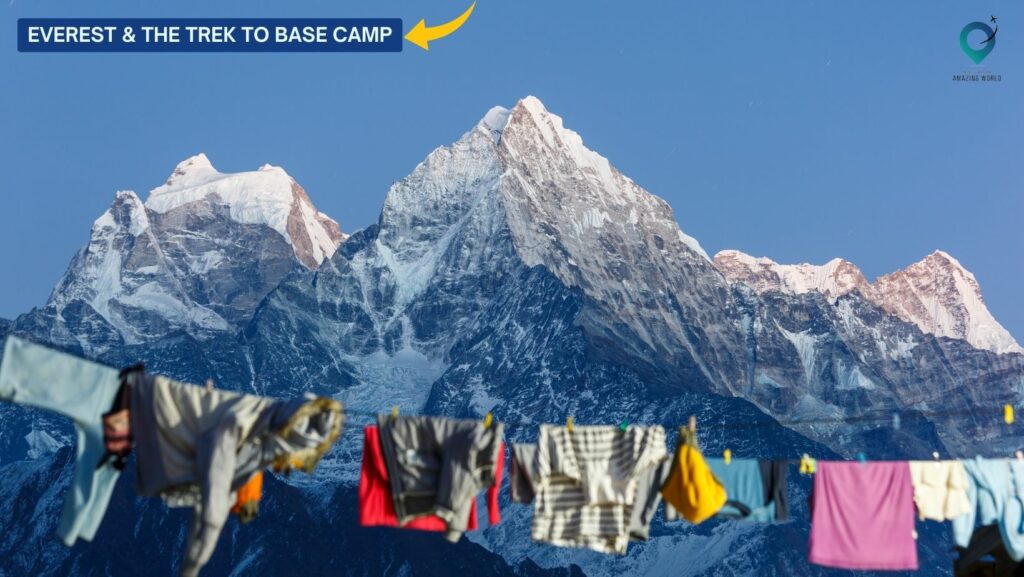
About the Place: Mount Everest, the world’s highest peak at 8,848 meters (29,029 feet), draws adventurers and mountaineers from around the globe. The trek to Everest Base Camp, located at an altitude of about 5,364 meters (17,598 feet), offers a once-in-a-lifetime experience amidst awe-inspiring Himalayan scenery. Trekkers traverse through Sherpa villages, suspension bridges, and rugged terrain, culminating in breathtaking views of Everest and neighboring peaks.
Place Address: Everest Base Camp, Solukhumbu District, Province No. 1, Nepal
How to Get There:
- By Flight: Fly from Kathmandu to Lukla Airport, the gateway to the Everest region. From Lukla, trekking routes lead through Namche Bazaar and onward to Base Camp.
- By Trek: For those seeking a longer adventure, start the trek from Jiri or Salleri, adding several days to the journey but allowing for acclimatization.
Why to Visit: Trekking to Everest Base Camp is a bucket-list achievement for outdoor enthusiasts and nature lovers. The journey offers a glimpse into Sherpa culture, with opportunities to visit monasteries, interact with local communities, and witness traditional way of life in the Himalayas. The trek is challenging yet rewarding, with stunning vistas of snow-capped peaks, including Everest, Lhotse, and Ama Dablam, along the way. The camaraderie among fellow trekkers and the sense of accomplishment upon reaching Base Camp make this adventure truly unforgettable. 🏕️
Daily Average Budget: Trekking to Everest Base Camp typically costs $1,200 to $2,500 USD per person, covering permits, guides, accommodation, meals, and flights.
Activities and Attractions:
- Namche Bazaar: Explore the bustling Sherpa market town.
- Tengboche Monastery: Visit this famous monastery with panoramic mountain views.
- Khumbu Glacier: Marvel at the massive glacier on the way to Base Camp.
- Sunrise Views: Witness sunrise over Everest from viewpoints like Kala Patthar.
Things to Avoid:
- Ignoring Altitude: Acclimatize properly to prevent altitude sickness.
- Overpacking: Pack essentials and keep your load light for easier trekking.
- Solo Trekking: Trek with a guide or group for safety and local insights.
Trekking to Everest Base Camp offers not only a physical challenge but also a spiritual journey through some of the world’s most stunning landscapes, making it a once-in-a-lifetime adventure.
10. International Mountain Museum
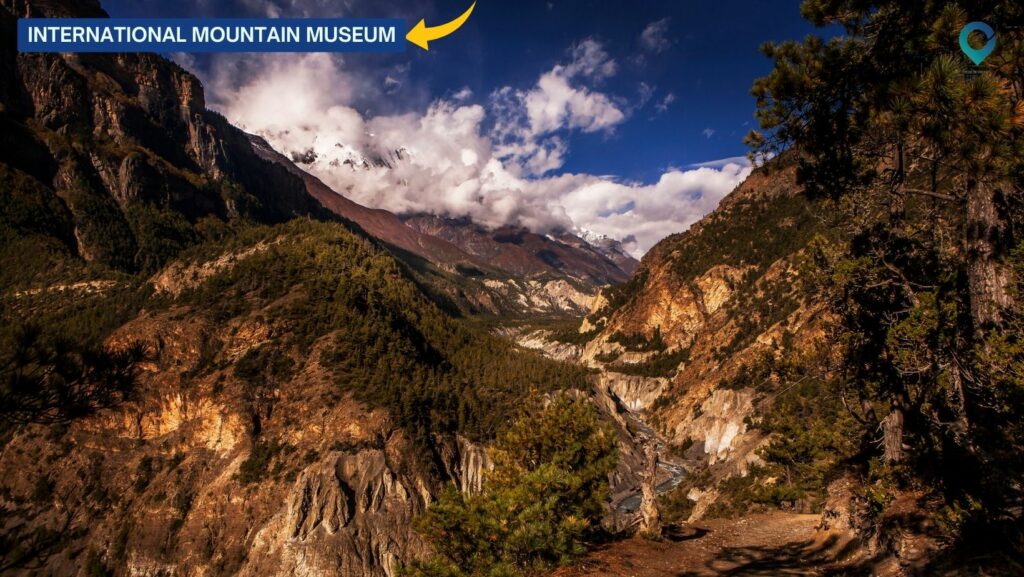
About the Place: The International Mountain Museum in Pokhara is dedicated to showcasing the cultural and natural history of the world’s mountainous regions. It aims to promote mountain tourism, mountaineering history, and the lifestyles of mountain communities worldwide. The museum features exhibit on mountain expeditions, biodiversity, geology, and cultural artifacts, offering insights into the challenges and achievements of mountain exploration and conservation efforts globally.
Place Address: International Mountain Museum, Ratopahiro, Pokhara, Nepal
How to Get There:
- By Taxi: Taxis are readily available from Pokhara city center to the museum, taking about 20 minutes.
- By Bus: Public buses from Pokhara’s Tourist Bus Park also service the museum route, with a slightly longer travel time due to stops.
Why to Visit: The International Mountain Museum provides a comprehensive educational experience for visitors interested in mountain environments and cultures. It highlights Nepal’s mountaineering history, including artifacts from famous expeditions like those to Everest and Annapurna. Interactive exhibits, dioramas, and multimedia displays engage visitors of all ages, offering a deeper understanding of the challenges faced by mountain communities and the importance of sustainable mountain development. The museum’s location near Pokhara, with views of the Annapurna range, adds to its allure.
Daily Average Budget: Entrance to the International Mountain Museum costs approximately $3 to $5 USD per person, with additional expenses for transportation and meals.
Activities and Attractions:
- Exhibition Halls: Explore galleries on mountaineering history, mountain cultures, and biodiversity.
- Outdoor Displays: View outdoor exhibits showcasing traditional mountain lifestyles and equipment.
- Documentaries: Watch documentaries on mountaineering feats and conservation efforts.
- Viewpoints: Enjoy panoramic views of the Annapurna range from the museum grounds.
Things to Avoid:
- Touching Artifacts: Respect museum exhibits and avoid touching fragile items.
- Disrupting Exhibits: Maintain quiet and respectful behavior in exhibition halls.
- Littering: Keep the museum premises clean by disposing of trash responsibly.
11. Lumbini
About the Place: Lumbini is revered as the birthplace of Siddhartha Gautama, the Lord Buddha, making it one of the most important pilgrimage sites for Buddhists worldwide. Located in the Rupandehi District of Nepal, Lumbini is a UNESCO World Heritage Site that attracts visitors seeking spiritual enlightenment and cultural insights. The sacred garden at Lumbini is believed to be where Queen Maya Devi gave birth to Prince Siddhartha under a sal tree, now marked by the Mayadevi Temple and the Ashoka Pillar.
Place Address: Lumbini, Rupandehi District, Lumbini Zone, Nepal
How to Get There:
- By Air: Fly to Gautam Buddha Airport in Bhairahawa, approximately 30 minutes from Lumbini. From the airport, take a taxi or bus to Lumbini, about a 45-minute drive.
- By Road: Lumbini is accessible by road from major cities like Kathmandu and Pokhara. Buses and taxis ply the route, offering a scenic journey through Nepal’s countryside.
Why to Visit: Visiting Lumbini offers a profound spiritual experience and a chance to explore Buddhist heritage. Pilgrims and tourists alike visit the sacred garden, temples, monasteries, and archaeological sites that showcase the life of Buddha and the spread of Buddhism across the world. The tranquil ambiance, meditative atmosphere, and historical significance make Lumbini a place for reflection, learning, and cultural immersion. 🌸📿
Daily Average Budget: Visitors can explore Lumbini on a budget of approximately $5 to $10 USD per day, covering entrance fees (if applicable), food, and transportation.
Activities and Attractions:
- Mayadevi Temple: Visit the ancient temple marking the birthplace of Buddha.
- Ashoka Pillar: View the pillar erected by Emperor Ashoka in the 3rd century BC, signifying Lumbini’s importance.
- World Peace Pagoda: Explore the Japanese-built pagoda symbolizing peace and harmony.
- Monastic Zone: Visit monasteries from various Buddhist countries, each showcasing unique architecture and traditions.
Things to Avoid:
- Disrespecting Sacred Sites: Maintain silence and respectful behavior around temples and monasteries.
- Photography Restrictions: Respect any photography rules around religious sites.
- Disturbing Wildlife: Avoid feeding or disturbing wildlife in the surrounding Lumbini area.
Visiting Lumbini offers not just a glimpse into Buddhist history but also a serene retreat for spiritual seekers and cultural enthusiasts alike.
12. Helambu Trek
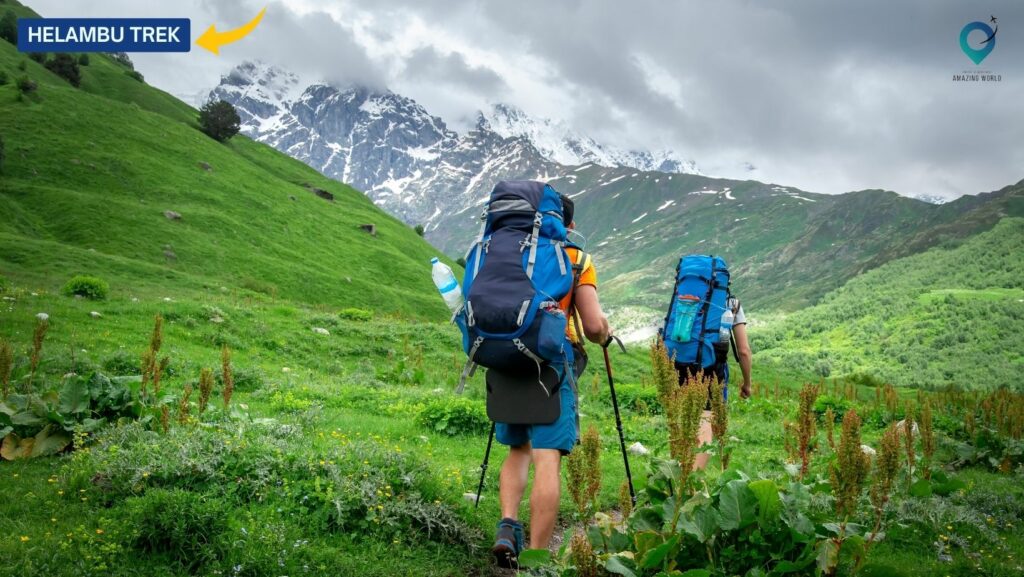
About the Place: The Helambu region is a scenic trekking destination north of Kathmandu, known for its picturesque villages, terraced farmland, and panoramic mountain views. The trek takes adventurers through Sherpa and Tamang settlements, offering insights into local culture and traditions. The relatively moderate trek is ideal for those seeking a Himalayan experience without the high-altitude challenges of other routes.
Place Address: Helambu, Sindhupalchok District, Bagmati Province, Nepal
How to Get There:
- By Bus: Take a bus from Kathmandu to Sundarijal, the starting point of the trek. The bus journey takes about 1.5 to 2 hours.
- Trekking Route: From Sundarijal, trek through Chisapani, Kutumsang, Thadepati, and Melamchi Gaon before reaching Helambu. The trek typically takes 5 to 7 days.
Why to Visit: The Helambu trek offers a blend of natural beauty and cultural immersion. Trekkers traverse dense forests, serene valleys, and terraced farmland, encountering hospitable locals and enjoying stunning views of the Himalayas along the way. The trek’s lower altitude makes it accessible year-round, with opportunities to explore traditional villages, Buddhist monasteries, and unique flora and fauna endemic to the region.
Daily Average Budget: The Helambu trek costs approximately $400 to $700 USD per person, covering permits, guides, accommodation, meals, and transportation.
Activities and Attractions:
- Village Exploration: Visit Sherpa and Tamang villages, experiencing local hospitality and culture.
- Scenic Views: Enjoy panoramic views of snow-capped peaks like Langtang Lirung and Ganesh Himal.
- Buddhist Monasteries: Visit monasteries such as Melamchi Ghyang and Tarke Ghyang along the trekking route.
- Flora and Fauna: Spot Himalayan wildlife and diverse vegetation in Shivapuri National Park.
Things to Avoid:
- Ignoring Altitude Advice: Even though it’s a lower-altitude trek, acclimatize properly to avoid altitude-related issues.
- Overpacking: Pack essentials and keep your trekking load light for comfort.
- Unregulated Waste Disposal: Dispose of trash responsibly to preserve the pristine environment.
The Helambu trek offers a rewarding journey through Nepal’s cultural and natural landscapes, providing a memorable experience for trekking enthusiasts and nature lovers.
13. Bardiya National Park
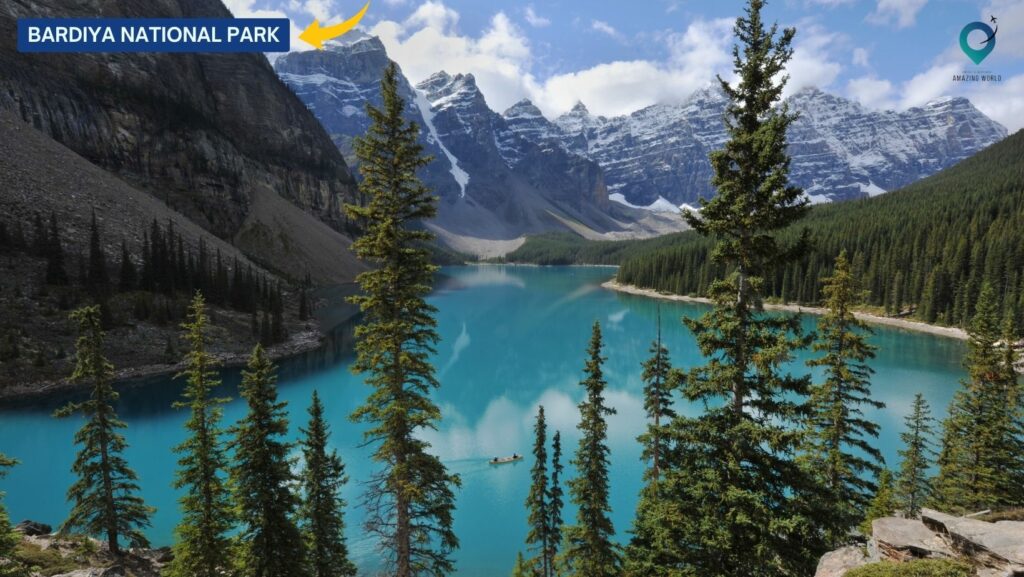
About the Place: Bardiya National Park, situated in the Terai region of Nepal, is a wildlife sanctuary known for its rich biodiversity and conservation efforts. Covering an area of 968 square kilometers, the park is home to endangered species like the Bengal tiger, one-horned rhinoceros, and Gangetic dolphin, making it a prime destination for wildlife enthusiasts and nature lovers. The park’s diverse ecosystems include grasslands, riverine forests, and marshes, supporting a wide range of flora and fauna.
Place Address: Bardiya National Park, Bardiya District, Province No. 5, Nepal
How to Get There:
- By Air: Fly from Kathmandu to Nepalgunj Airport, located near Bardiya National Park. From Nepalgunj, take a taxi or bus to the park entrance, approximately a 2-hour drive.
- By Road: Bardiya is accessible by road from major cities like Kathmandu and Pokhara. Buses and taxis ply the route, with travel times varying based on departure point.
Why to Visit: Bardiya National Park offers an unparalleled opportunity to experience Nepal’s wilderness and observe rare wildlife in their natural habitat. Visitors can embark on jeep safaris, elephant rides, and guided walks to encounter Bengal tigers, Asian elephants, rhinoceroses, and over 250 bird species. The park’s pristine landscapes, including the Karnali River, provide scenic backdrops for wildlife viewing and photography, making it a must-visit for eco-tourists and adventure seekers.
Daily Average Budget: Exploring Bardiya National Park costs approximately $50 to $100 USD per day, covering park permits, accommodation, meals, and safari activities.
Activities and Attractions:
- Wildlife Safaris: Join jeep safaris or elephant rides to spot Bengal tigers, one-horned rhinoceroses, and other wildlife.
- Bird Watching: Explore the park’s diverse bird habitats, including wetlands and riverbanks.
- Tharu Cultural Experience: Visit Tharu villages near the park to learn about indigenous culture and traditions.
- River Activities: Enjoy rafting or canoeing along the Karnali River, observing riverine wildlife.
Things to Avoid:
- Approaching Wild Animals: Maintain a safe distance from wildlife to ensure their protection and your safety.
- Disrupting Ecosystems: Respect Park rules and guidelines to minimize environmental impact.
- Illegal Activities: Avoid participating in or supporting illegal wildlife trade or poaching.
Bardiya National Park offers a rare glimpse into Nepal’s wildlife diversity and conservation efforts, providing an unforgettable adventure for nature enthusiasts and conservation advocates alike.
14. Pashupatinath Temple
About the Place: Pashupatinath Temple is one of the most sacred Hindu temples in Nepal, located on the banks of the Bagmati River in Kathmandu. Dedicated to Lord Shiva, the temple complex is a UNESCO World Heritage Site and a significant pilgrimage destination for Hindus from around the world. The main temple, with its pagoda-style architecture and golden spire, stands as a symbol of Nepal’s religious and cultural heritage.
Place Address: Pashupatinath Temple, Pashupati Nath Road, Kathmandu, Bagmati Province, Nepal
How to Get There:
- By Air: Fly to Tribhuvan International Airport in Kathmandu. From the airport, take a taxi or airport shuttle to Pashupatinath Temple, approximately a 20-minute drive.
- By Road: Pashupatinath Temple is easily accessible by road from Kathmandu city center. Taxis, buses, and rickshaws are available for a short journey to the temple complex.
Why to Visit: Visiting Pashupatinath Temple offers a glimpse into Nepal’s rich religious traditions and architectural heritage. Devotees and tourists alike visit to witness daily rituals, including cremation ceremonies along the Bagmati River, which flows through the temple grounds. The serene ambiance, intricate wood carvings, and spiritual significance make Pashupatinath Temple a must-visit for cultural enthusiasts and spiritual seekers alike.
Daily Average Budget: Exploring Pashupatinath Temple typically costs around $5 to $10 USD per person, covering entrance fees (if applicable), donations, and transportation.
Activities and Attractions:
- Main Temple: Visit the main Pashupatinath Temple complex, featuring the sacred lingam of Lord Shiva.
- Bagmati River Ghats: Observe cremation ceremonies and rituals along the river banks.
- Deity Shrines: Explore smaller shrines dedicated to various Hindu deities within the temple complex.
- Art and Architecture: Admire the intricate wood carvings and pagoda-style architecture of the temple structures.
Things to Avoid:
- Photography Restrictions: Respect rules regarding photography around sacred areas and during rituals.
- Disrupting Rituals: Maintain silence and respect during religious ceremonies and rituals.
- Cultural Sensitivity: Dress modestly and adhere to local customs and traditions while visiting the temple.
Visiting Pashupatinath Temple provides a cultural and spiritual experience, allowing visitors to immerse themselves in Nepal’s religious heritage and traditions.
15. White Water Rafting
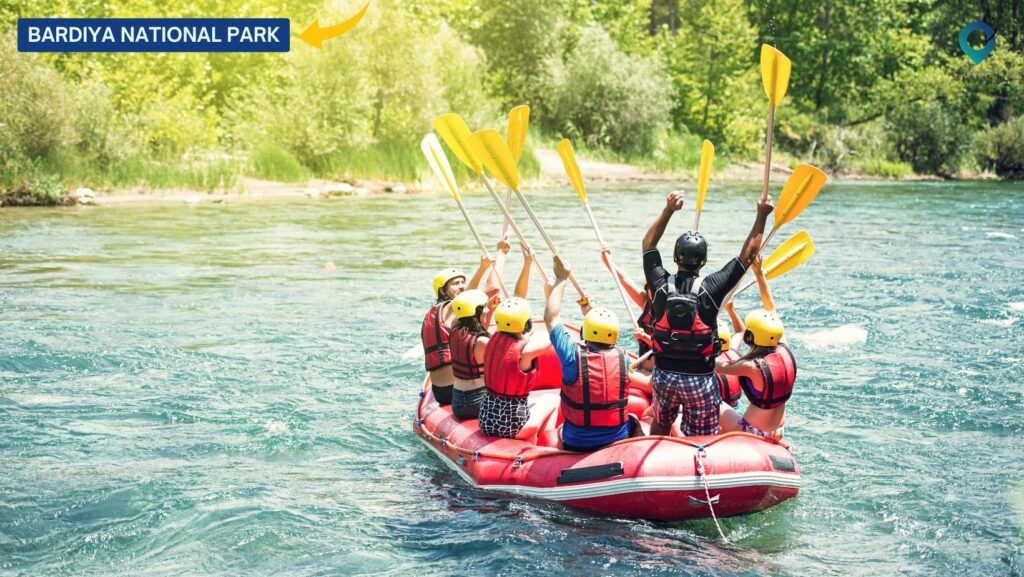
About the Activity: White water rafting in Nepal is an exhilarating adventure that takes participants down some of the world’s most scenic and challenging rivers. Nepal’s diverse topography, ranging from snow-capped mountains to lush valleys, offers ideal conditions for rafting enthusiasts of all skill levels. The experience combines adrenaline-pumping rapids with breathtaking natural landscapes, making it a popular activity for adventure seekers visiting the country.
Place Address: Various rivers across Nepal, including Trishuli River, Seti River, and Bhote Koshi River.
How to Get There:
- By Road: Rafting trips usually depart from Kathmandu or Pokhara. Participants travel by bus or private vehicle to the starting point of the rafting adventure.
- By Tour Operator: Many tour operators in Kathmandu and Pokhara offer packages that include transportation to and from the rafting locations.
Why to Visit: White water rafting in Nepal offers an adrenaline-filled experience amidst stunning natural surroundings. Participants navigate through rapids of varying difficulty levels, ranging from gentle stretches suitable for beginners to challenging torrents that test even seasoned rafters. The thrill of riding the river currents, combined with views of lush forests, terraced hillsides, and cascading waterfalls, creates an unforgettable adventure for outdoor enthusiasts.
Daily Average Budget: The cost of white water rafting in Nepal varies depending on the river and duration of the trip, typically ranging from $50 to $150 USD per person per day. This usually includes equipment, guides, meals, and transportation.
Activities and Attractions:
- Rafting Routes: Explore popular rafting routes like the Trishuli River, known for its exhilarating rapids and scenic landscapes.
- Scenic Views: Enjoy panoramic views of Nepal’s countryside, including terraced farms and remote villages along the river banks.
- Camping: Some rafting trips include overnight camping by the riverside, offering a chance to relax and immerse in nature.
- Wildlife Spotting: Keep an eye out for diverse wildlife, such as birds and occasional sightings of monkeys along the riverbanks.
Things to Avoid:
- Ignoring Safety Briefings: Pay attention to safety instructions provided by guides before embarking on the rafting trip.
- Overestimating Skill Level: Choose rafting routes that match your experience and skill level to ensure a safe and enjoyable adventure.
- Environmental Conservation: Respect nature and avoid littering or disturbing the river ecosystem during your rafting experience.
White water rafting in Nepal is a thrilling outdoor activity that allows participants to explore the country’s natural beauty while challenging themselves with exciting river adventures.
Conclusion
Exploring Nepal offers a diverse array of experiences that cater to every travellers interest, from spiritual pilgrimages at sacred sites like Pashupatinath Temple to adrenaline-pumping adventures like white water rafting. The country’s rich cultural heritage, stunning Himalayan landscapes, and warm hospitality create a tapestry of unforgettable memories for visitors.
Whether you seek spiritual enlightenment, outdoor thrills, or simply a deeper connection with nature, Nepal promises to captivate and inspire with its unique blend of tradition and adventure. Embrace the opportunity to discover this Himalayan gem, where every journey reveals new wonders and enriching experiences.
How much did you like Our detailed Nepal Attractions: 15 Must-Visit Tourist Attractions That Capture the Spirit of the Himalayas? Review Also, please share these Blogs with your friends on social media.
Recommended
- Travel Hacks
- 12-Ways to Keep Kids Entertained
- Travel Tips for Single Parents
- Top travel tips for seniors

Meet David Hoper, a passionate travel Blog writer with 7+ years of experience in travel content. Through his exemplary storytelling and engaging narratives, he shares his experiences and brings destinations to life. With a keen eye for detail and a love for exploration, he has cultivated a diverse portfolio of travel blogs that inspire and inform readers worldwide.








